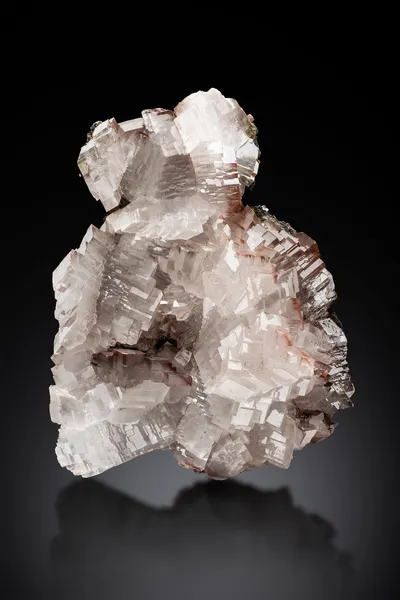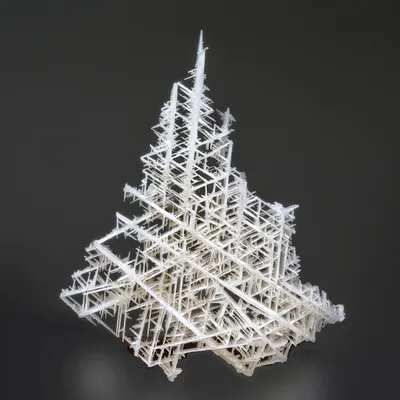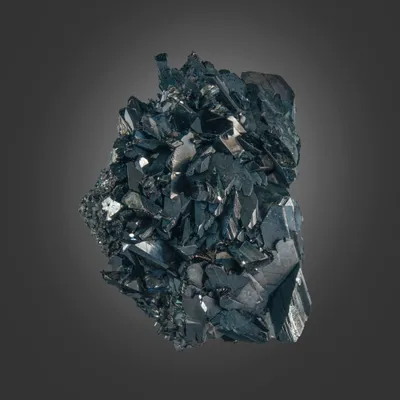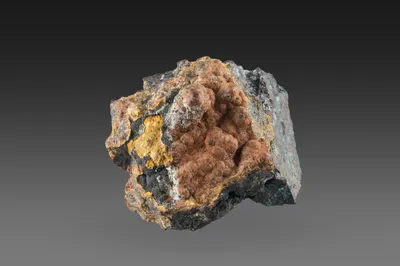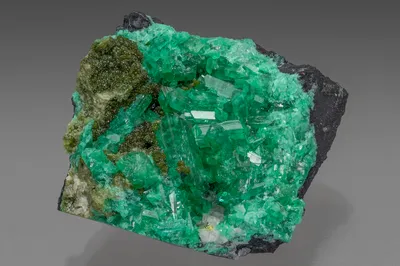Mineral Species
Ferrilotharmeyerite
Type Locality
Yes
Composition
CaZnFe3+(AsO4)2(OH)2·H2O
Crystal System
Monoclinic
Status at Tsumeb
Confirmed (type locality)
Abundance
Very rare
Distribution
Second and third oxidation zones
Paragenesis
Supergene
Entry Number
Species; TSNB130
Type Mineralogy
Ferrilotharmeyerite, IMA 1986-024, was discovered on a specimen in the collection of the National Museum of Canada (NMC 64573), originally collected by TCL mineralogist John Innes in 1983, from the West 40 Stope on 32 Level in the second oxidation zone. A similar specimen in the collection of Museum Victoria (M38092), in Australia, was used to determine the water content of the mineral; these two specimens are considered co-types. Ferrilotharmeyerite is the ferric iron analogue of lotharmeyerite, and was named for this compositional relationship (Ansell et al. 1992); both are members of the tsumcorite group of minerals. The structure of ferrilotharmeyerite was refined by Krause et al. (1998) who also revised the formula to that shown above. Additional type material is conserved at the Smithsonian Institution in Washington D.C. (catalogue number 163579).
General Notes
The type specimen is from the West 40 Stope on 32 Level, in the middle of the second oxidation zone. Ansell et al. (1992) described ferrilotharmeyerite from the type specimen as aggregates of randomly oriented to sub-parallel crystals, individually to 0.2 mm, transparent, medium-yellow to brownish-yellow in colour and with a very pale yellow streak. The mineral is readily confused with tsumcorite, gartrellite, or beaverite. The type assemblage includes tennantite, scorodite, conichalcite, schneiderhöhnite and beudantite in association with ferrilotharmeyerite.
In 1986 a major find of cuprian adamite [= zincolivenite] on 30 Level was accompanied by bright yellow, powdery ferrilotharmeyerite (Gebhard 1999; Cairncross 2000).
A specimen from the Pinch Collection (now at Harvard University (MGMH 2020.7.761), originally recovered by John Innes from 35 Level, consists of coarse crystals of orange-yellow ferrilotharmeyerite on beudantite crystals on a quartz matrix. A very similar specimen in the Southwood Collection (MS2018.025) has minor olivenite and carminite in association.
Ferrilotharmeyerite also occurs in the third oxidation zone; from 44 Level in a distinctive paragenesis with chenevixite and silver amalgam, and from 43 and 44 levels with zincolivenite (Gebhard 1999).
Gebhard (1999) noted that crystals of cuproadamite [= zincolivenite] from 43 Level were associated with ferrilotharmeyerite, either as an underlying layer of yellow microcrystals or as distinctive brown crystals to 1 mm. He also illustrated a specimen of zincolivenite crystals with cores consisting of ferrilotharmeyerite (Gebhard 1999; page 160) which he attributed to 44 Level.
In 1994 a vug on 44 Level yielded exceptional green chenevixite crystals in association with brown ferrilotharmeyerite. According to Gebhard (1999) this was the first find of chenevixite at Tsumeb since the early discoveries reported by Maucher (1908). A specimen in the Southwood Collection (MS2012.155), believed to be from the same 44 Level occurrence, has tiny octahedral crystals of native silver (or silver amalgam) in association. The ferrilotharmeyerite in these specimens forms spherical aggregates (to 3 mm) of minute platy crystals, brown in colour and highly translucent.
A standardless EDS analysis of a specimen offered for sale by Joy Désor (www.e-rocks.com; accessed May 2021) indicated the occurrence of a possible cadmium-bearing ferrilotharmeyerite containing c. 6.8% Cd, associated with conichalcite, dolomite and tsumcorite in a sulphide matrix. The mechanism of possible Cd substitution in ferrilotharmeyerite, and its extent, requires further investigation.
Associated Minerals
beudantite; calcite; carminite; cerussite; chenevixite; chudobaite; conichalcite; cuprite; dolomite; gaitite; olivenite; quartz; schneiderhöhnite; scorodite; sewardite; silver; tennantite-(Zn); tsumcorite; zincolivenite
Pseudomorphs
Ferrilotharmeyerite is reported to form pseudomorphs after the following minerals: tennantite (rare).
